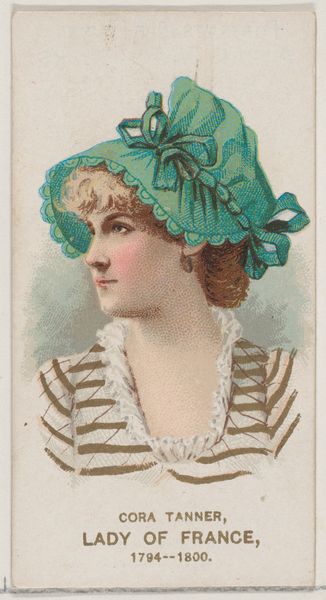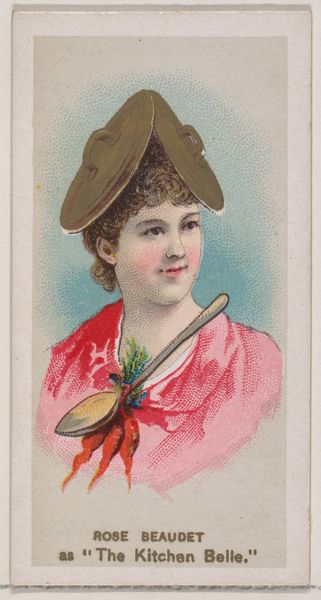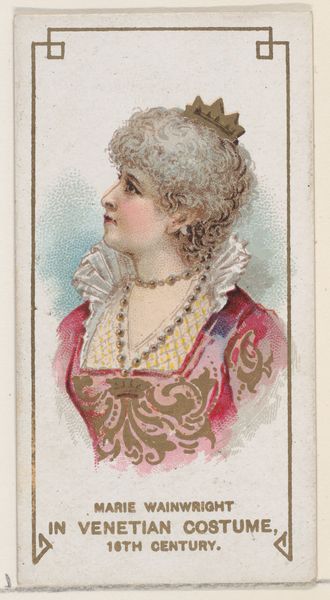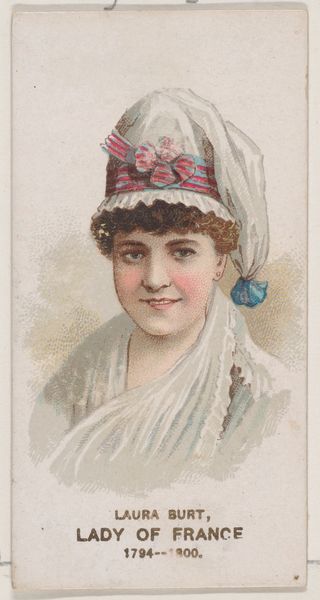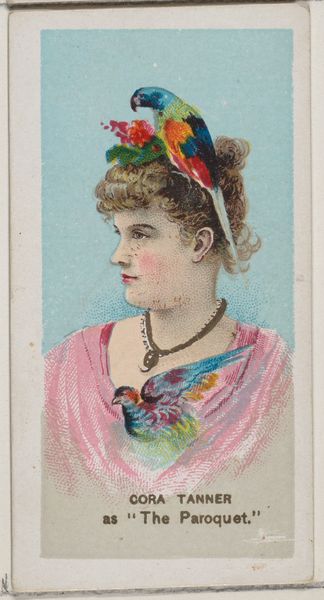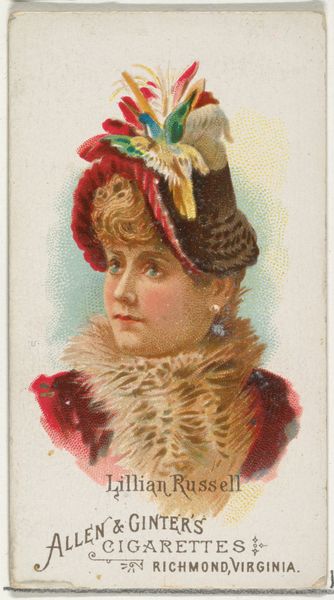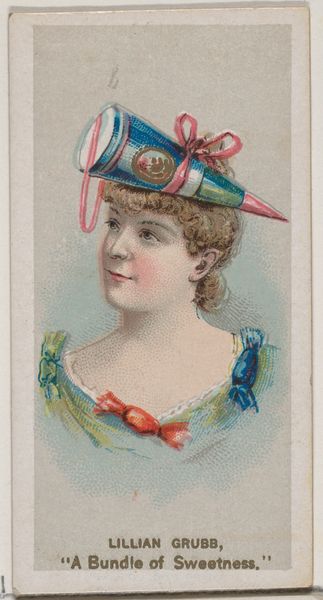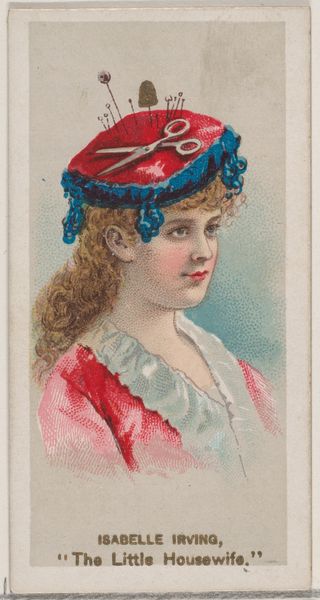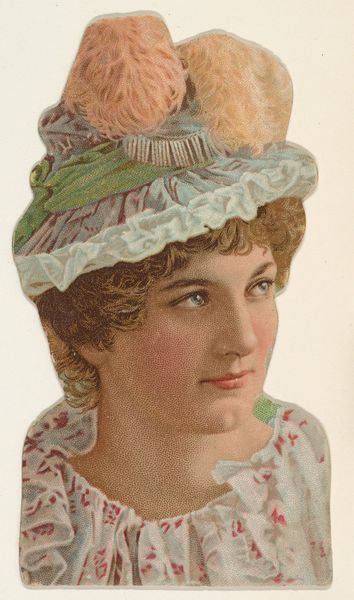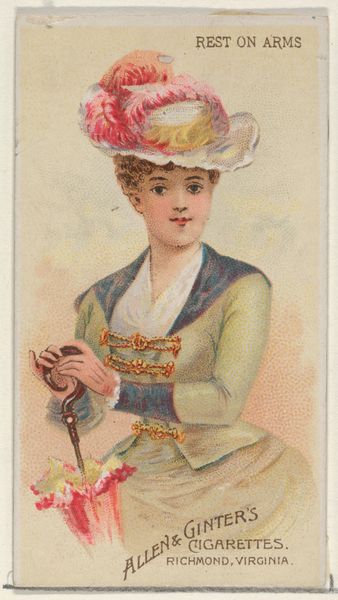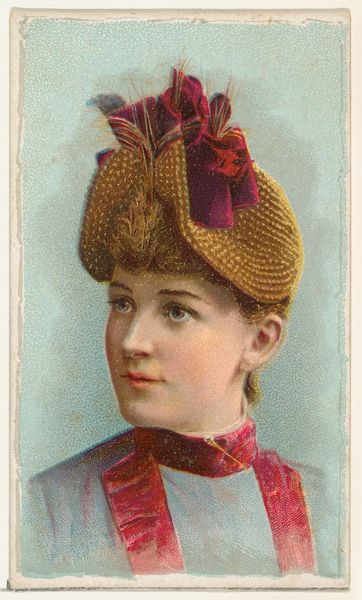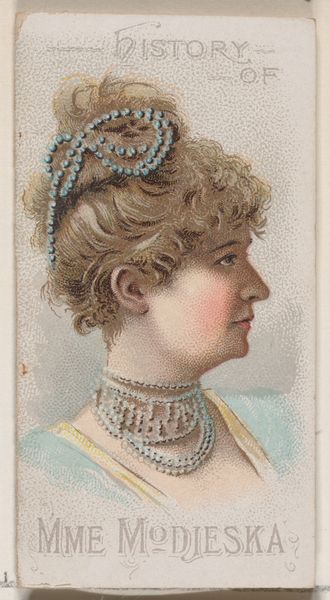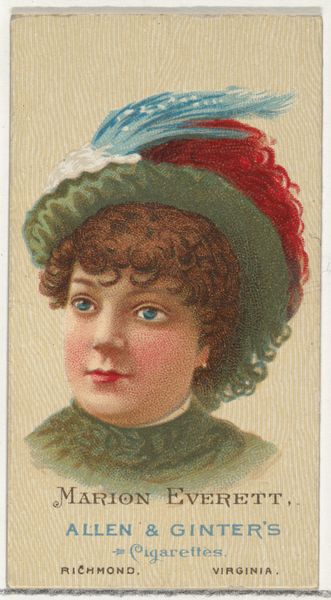
Mabel Jordan Dressed as a Lady of Havre, from the set Actors and Actresses, Second Series (N71) for Duke brand cigarettes 1888 - 1890
0:00
0:00
drawing, coloured-pencil, print
#
portrait
#
drawing
#
coloured-pencil
# print
#
impressionism
#
caricature
#
figuration
#
coloured pencil
#
portrait art
Dimensions: Sheet: 2 3/4 x 1 1/2 in. (7 x 3.8 cm)
Copyright: Public Domain
Editor: This lovely little print is called "Mabel Jordan Dressed as a Lady of Havre," dating from around 1888-1890. It’s part of the Actors and Actresses series by W. Duke, Sons & Co., using colored pencil and printmaking. I'm intrigued by its slightly caricatured feel and the direct gaze, even though it's a profile view. What’s your take on it? Curator: Well, seeing that it was made for Duke brand cigarettes, we have to think about it as a piece of commercial art first and foremost. It functioned as advertising. The “high art” style portrait makes the cigarette brand feel sophisticated, and associates it with famous actresses, which elevates the product above others in its class. It gives you status by association. Editor: So, it’s less about genuine artistic expression and more about manufacturing an image? Curator: Precisely. The image participates in a network of exchange, celebrity, and aspiration, which is so interesting. In its own right, that image-making *is* an artform. What is more interesting is how society reacted to it. Editor: That makes sense. Were there similar marketing tactics back then? Curator: Absolutely! Actresses, sports figures, politicians...all prime advertising material. What strikes me most is how accessible these images became due to mass production. Did that influence its wide consumption? It surely impacted understandings of beauty, fashion and even social roles. How did these pocket portraits shape public perceptions? Editor: Wow, I never considered the political angle. So much more than just a pretty picture on a cigarette card. I'll be sure to check some similar portraits of other famous people of the period. Curator: Indeed. The political angle adds nuance, I'd say! It's fascinating to think about how everyday objects like these shaped societal perceptions of people and status.
Comments
No comments
Be the first to comment and join the conversation on the ultimate creative platform.

